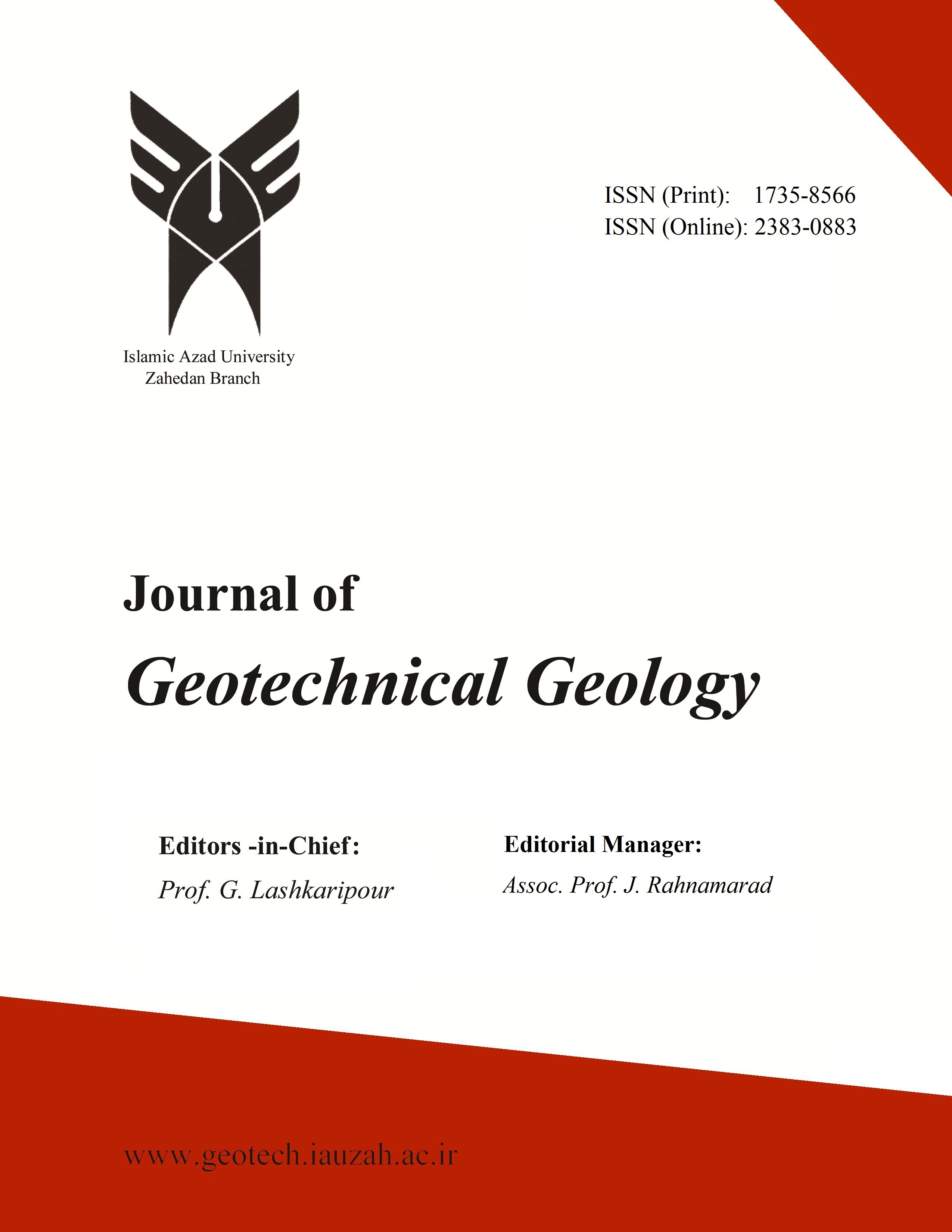
Journal of Geotechnical Geology
Yazarlar: Jafar Rahnamarad, Behroz Sahebzadeh, Ali asghar Mirhajizadeh
Konular:-
Anahtar Kelimeler:Dykes,Erosion,Exfoliation,Granular texture,Southeast Iran
Özet: The Zahedan granitoids, which pertain to an arid to semiarid region, have been studied. Those granite rocks without a cover of Quaternary sediments are exposed directly to dry and warm climate. The characteristic conditions of southeas-tern Iran perform a major role in the amount of rock demolition and weathering and in the formation of special mor-phologic forms. Samples have been taken from the granite massive. Hand samples and microscopic thin sections show that they have relatively medium grain size and are of bright color. The major minerals are well-formed biotite, abun-dant quartz and zonal plagioclase. Dykes and stock intrusion are the main characteristics of these rocks. Due to the contact with intrusions and granitoids, most of the host rocks have been changed into hornfels and schists. The green schists are contact concordant and as host rocks have an excessive spread. All stages of weathering processes, i.e. physi-cal, chemical and down to soil building, can be observed here. Another specific feature is the existence of dark and fine- grained enclaves in rocks. The rocks show signs of granoporphyrit-microgranular structures in microscopic thin sec-tions. There is plentiful biotite in rocks. Part of the Zahedan granite is under the influence of wind erosion. Xenolith discharge from the granite massive causes the creation of manifold spin holes in rocks. In this way it bestows to rocks a karstic facade and cavernous forms. The biomechanical weathering, as growth of tree roots in joints and cracks of gra-nite, expedites the demolition of rocks. The splitter activity of wild pistachio tree roots, like a wedge, has been attributed to mechanical weathering. Another kind of physical erosion is the stone surface exfoliation, known as exfoliation domes. The released pressure on the stone surface creates fractures followed by the erosion of rock and formation of numerous blocks. Most of the available joints in granite are subsequently filled with quartz.